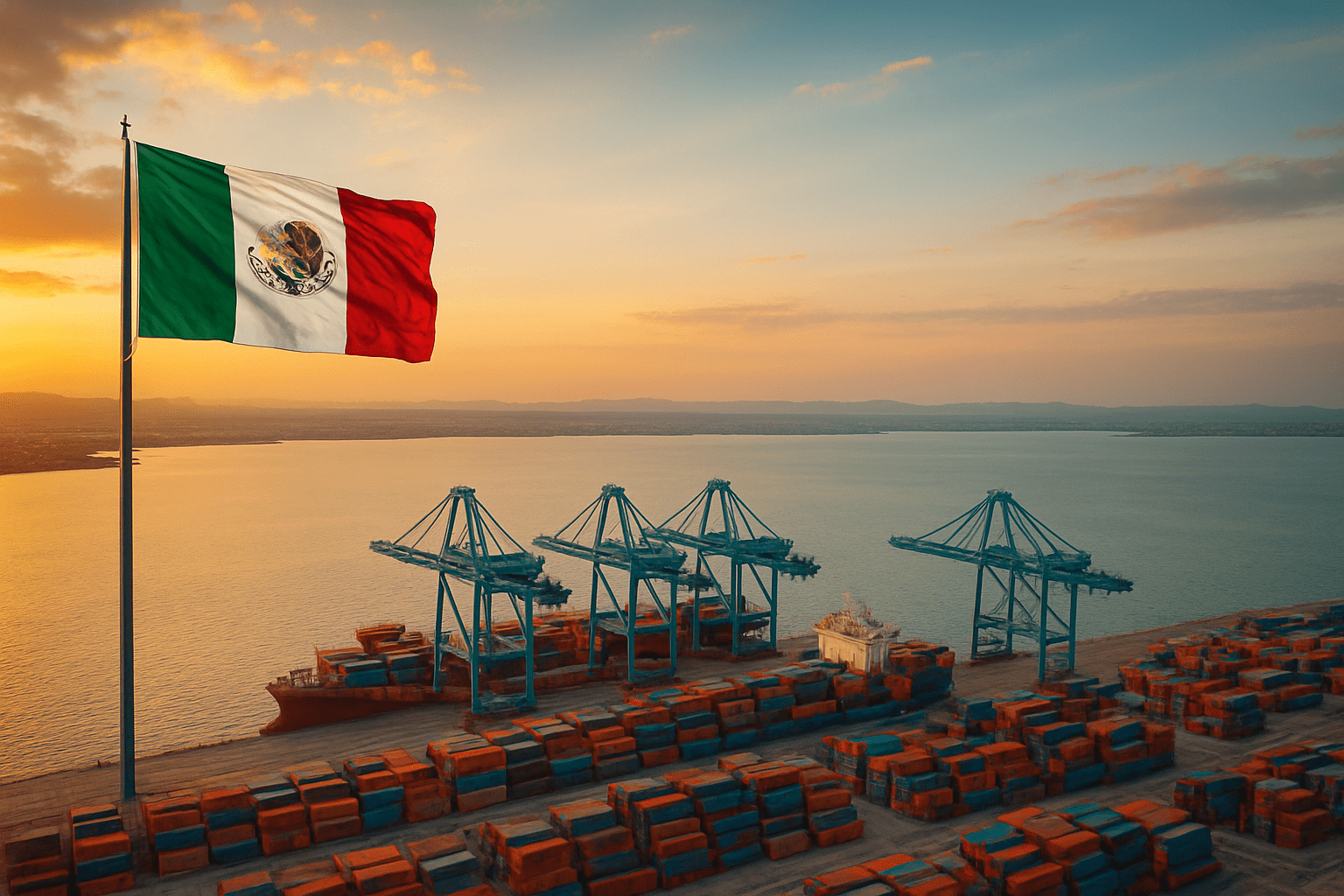By María José Gamba
The Port at a Decisive Stage
The port of Lázaro Cárdenas is at a decisive stage. In a world where global logistics is under pressure from stricter regulations, trade tensions, and the constant pursuit of efficiency, this port in Michoacán is striving to take another step toward becoming the most competitive maritime hub in Mexico and the Pacific region.
The Challenge of Cargo Inspections
The challenge is significant: while customs authorities have intensified cargo inspections to enhance security and boost revenue, clearance times have increased, adding costs for logistics players. On average, the port cargo cycle takes about eight hours, according to port community data. While this is an improvement compared to delays of up to twelve hours in previous years, bottlenecks still persist.
A United Port Community
What’s remarkable about Lázaro Cárdenas is that it does not face this challenge alone. Since 2013, the Lázaro Cárdenas Port Community has brought together terminal operators, transport companies, customs agencies, maritime authorities, and private businesses. This coordinated model has enabled joint solutions, improved processes, and promoted the port at international trade fairs.
Structural Advantages and Expansion Capacity
Unlike other ports constrained by surrounding urban areas, Lázaro Cárdenas has space and planning. Its navigation channels reach 19 meters in depth, making it suitable for large vessels. It has a dedicated logistics center for trucks (ASLA), which reduces internal congestion, and more than 97 kilometers of rail tracks within the port.
Additionally, it is the only port with over 1,100 hectares available for new development—double what other Pacific ports in Mexico can offer. This positions it well to attract long-term investment.
Diversification and Mixed Figures
The port handles more than just containers: its capacity extends to automobiles, bulk cargo, minerals, petroleum fluids, agricultural products, and steel. Global companies like APM Terminals, Hutchison Ports, SSA Marine, Pemex, and ArcelorMittal are part of its daily operations.
In 2025, the numbers show contrasts. From January to July, the port handled over 16.4 million tons of total cargo, a 7.6% drop compared to the same period in 2024 due to a decline in mineral bulk. However, container handling grew by 10%, surpassing 1.48 million TEUs, while automobile traffic reached 407,897 units, keeping it as the national leader in this segment.
Intermodality: The Railroad Challenge
While trucking remains dominant—moving 75% of cargo inland—the railroad is trying to regain prominence. Currently, it accounts for just 25%, although destinations such as Pantaco, Salinas Victoria, Querétaro, and Puerta México are starting to see growth.
Rail reliability, nearly 100% effective with no blockages in the past three years, is helping change user perceptions. If it consolidates, it could give the port a competitive edge over other Pacific ports.
Customs: Security with Added Costs
Increased customs inspections remain a sensitive issue. Between 2022 and 2024, inspection gates doubled, and X-ray equipment and alongside-vessel inspection infrastructure were added. These measures improve security and transparency but also slow operations and raise logistics costs.
It is a delicate balance: providing national-level security without losing competitiveness in international trade.
Strategic Investments
Lázaro Cárdenas’ future hinges on Isla de la Palma, a 608-hectare site acquired by the port authority, of which 162 hectares have already been allocated to companies like Maersk and SSA. Public investment through 2030 exceeds 6.3 billion pesos, dedicated to road infrastructure, modernization of the airstrip, and expansion of bonded yards.
Private investments also include expansions of container docks and yards by APM Terminals and Hutchison Ports, as well as strengthening automobile and mineral operations by SSA and TPP.
Reputation and Perception of Security
One of the port’s ongoing challenges is its public image. Railroad blockages and highway security incidents have left their mark. Although the situation has improved in recent years, regaining market trust is a slow process.
The key will be consistency: efficiency, connectivity, and security. Only then can Lázaro Cárdenas consolidate as the maritime hub Mexico needs.
Final Reflection
Over the past eight years, Lázaro Cárdenas has doubled its operations, and in the next 18 months, it aims to grow another 40%. The port has everything to become a strategic logistics node: space, infrastructure, and a cohesive community. However, the challenge lies in balancing security with operational agility and convincing importers and exporters that past issues are behind them.
As someone closely following logistics trends, I believe the port’s success will not depend solely on cranes, docks, or customs—it will also rely on the ability of companies and authorities to work together to strengthen the national supply chain.
At Americas Forwarding, as a freight forwarding company based in the U.S., we understand that port efficiency directly impacts clients who want to move goods quickly and securely. That’s why we see investments and collaborative efforts like these as the right path for positioning Mexico as a key player in international trade.

